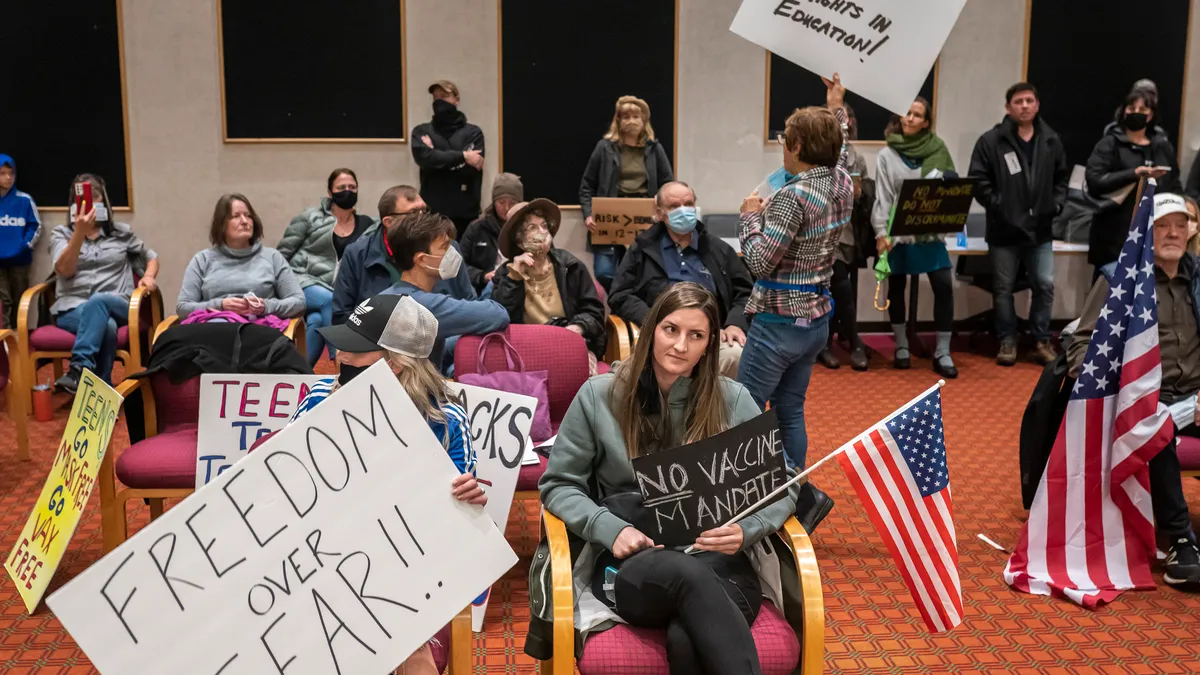Dive Brief:
- U.S. Education Secretary Betsy DeVos is asking for public comment on whether to push back until 2020 an Obama administration rule that asks states to identify whether students of color are overrepresented in special education programs, according to The Washington Post.
- Issued in 2016, the rule was a response to a report showing “significant disproportionality” based on race and ethnicity in students who are being identified for and placed in special education, as well as discipline rates among these students.
- The rule would have required states to use a standard procedure for identifying disparities, and for districts exceeding “reasonable risk ratio thresholds” to use a portion of their Individuals with Disabilities Education Act (IDEA) funds for more early intervention programs. “That determination is critical to ensuring students get the supports they need and deserve,” the rule said.
Dive Insight:
The announcement Friday is the latest action by the Trump administration to interrupt or reverse guidelines or rules issued by his predecessor. In October, the Department of Education (ED) rescinded 72 documents that provided guidance regarding students with disabilities, which ED maintains is an effort to eliminate outdated guidance or rules and documents superseded by more up-to-date laws and instructions.
Last February, the administration withdrew federal guidance that allowed transgender students to use the bathroom matching their gender identity. The action means that decisions on these issues are left up to states and local school districts. Since then, many districts have taken efforts to show support for transgender students by adding gender-neutral bathrooms or issuing statements of support for these students.
DeVos’s critics have characterized her actions as an effort to remove protections for vulnerable students. But the issue of whether minority students are overrepresented in special education is not settled as far as researchers are concerned. In a September article, Nora Gordon, a senior fellow at the Brookings Institution, summarized research showing that racial and ethnic minorities are less likely to be placed in special education when family income and achievement is taken into account. Without adjusting for those characteristics, disability rates are higher for black and Native American students, but that is because “out-of-school factors such as poor nutrition, stress, and exposure to environmental toxins” are more likely to affect children of color and those in low-income families. “The unfortunate implication of this—that true prevalence of disability may be higher for these students—can get lost in the back and forth over measurement, sampling, and other methodological issues,” she writes.













